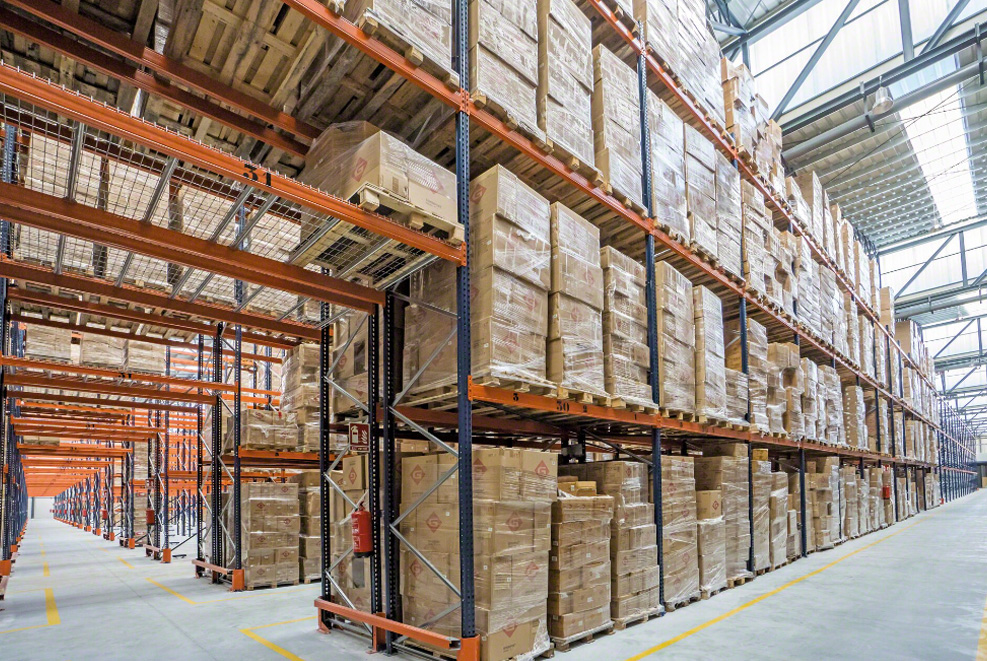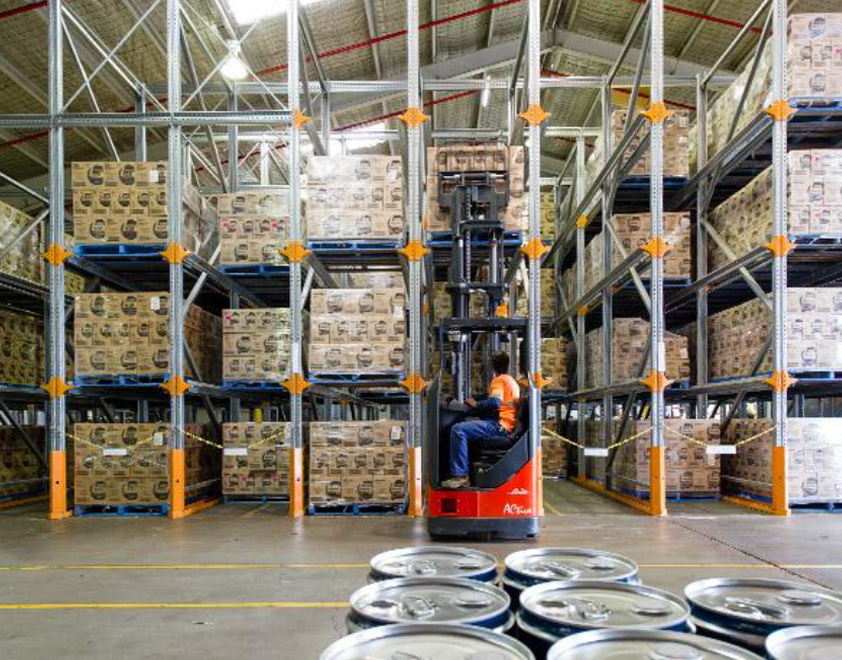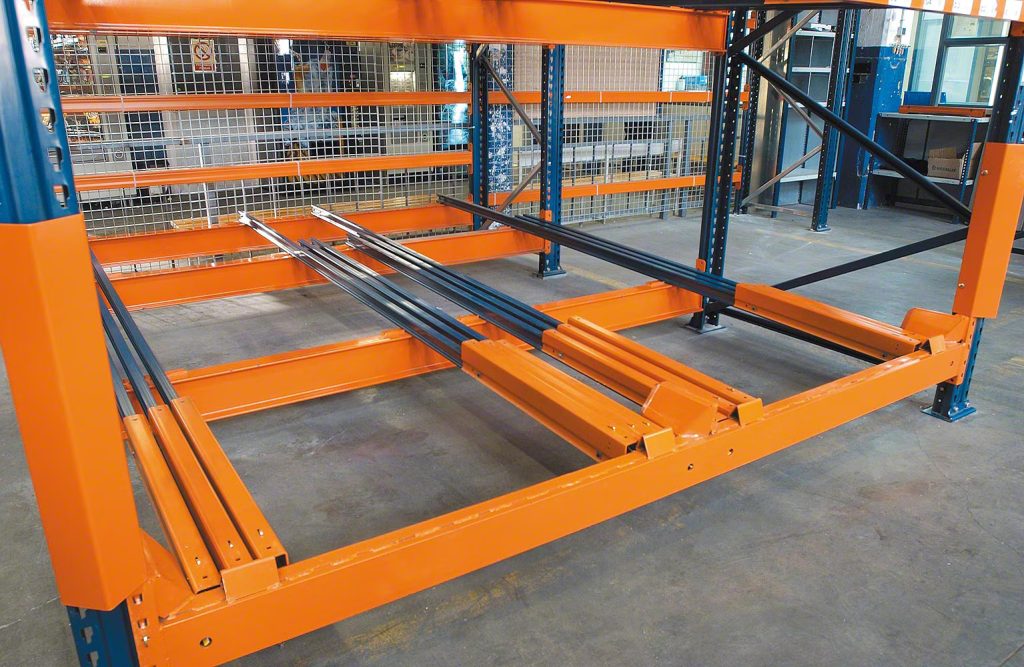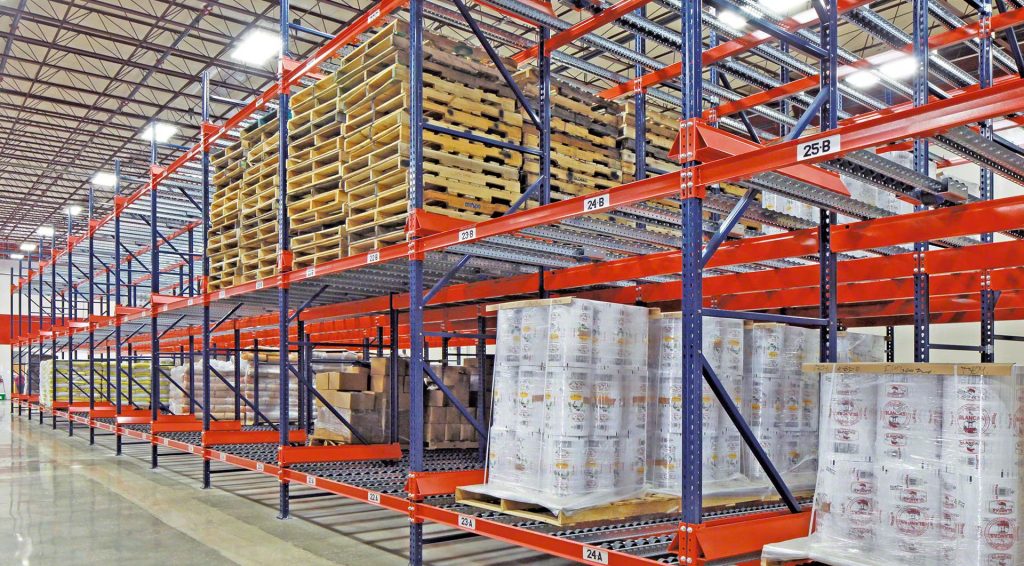If you’re running a warehouse or distribution center, then you know that floor space is everything and narrow aisle storage can help …
Racking and shelving are both storage methods, but both differ in application, amount of stored materials, and configurations. Racking systems are regarded as heavy-duty storage systems, which makes them ideal for warehouses and industrial environments. These systems can withstand the maximum weight where heavy and bulky materials such as pallets and machinery can be stored. Adjustable beams and productive frames are a few examples of basic equipment that take charge of such a function by enhancing principles of stability and maximum height.
On the other hand, shelving is usually appropriate for more easily reachable and boisterous items. Such items are shelving units normally available in the shops and offices for easy access to products or supplies. Their design features quite a lot in most of them include the open-minded principles on the shelving neater for easy searching of lesser items.
It cannot be assumed that any appropriate system can be applied indiscriminately based on available space. It is determined that robust racking systems do not need to hold back any bulk volumes. On the other hand, typically such as shelving where the items are not only kept, but also require regular and easy retrieval and use. Gaining such knowledge avoids any form of wastage in the storage space allowing enough concentration in making a choice between racking and rivet shelving which seems to be one of the most resting moments.
Unless the racking goes beyond these aims and earns a more critical contribution to the enhancement in efficiency of warehousing systems, racking procedures and units will always be orientated towards either increasing the storage area or health and safety within the warehouse or factory’s cubism structures. Each of the racking types has its strength, enabling it to fulfill the varied needs of the industries. From a grasp of what is racking to explaining what a racking system means and out from typical aisle floor racking to understand what models or designs of other types of racking exist this post intends to cover most fundamentally. Knowing the types of racking will in normal situations, enable one to manage stock efficiently and or optimize operations. Standing on the point of the warehouse’s loading capacity and space compatibility some basic types would be considered for use in this document. This guide focuses on the most commonly used types of racking in the current market with a detailed description of the features of each type to support the best solutions for your particular storage requirements.

When discussing the effectiveness of racking systems only a selective pallet racking would come top. A selective pallet racking system is a highly versatile storage approach that greatly improves the efficiency of any warehouse by providing optimal space utilization through various types of shelving. Additionally, this kind of racking system facilitates the retrieval of all the pallets as it ensures clear and maximized aisle space that can cater to multiple product lines in the retail or manufacturing industries.
Some of the characteristics of selective pallet racking include the adjustability of beam heights and the provision of tiered shelving for the storage of pallets of different sizes and weights. These configurations enhance the efficient storage and retrieval of stocks through effective stock location and accessibility, hence reducing stock-picking times and mistakes.
Additionally, the selective pallet racking type also works well with other types of handling equipment which means that the racking will fit well within the existing warehouse operations. Its simple installation and re-organization make it appropriate for companies that are expanding with time or those that want to deal with changes in the volume of stock during some seasons using mechanized shelving options. Food, beverage, pharmaceuticals and general merchandising industries gain maximum advantage from this advantageous racking system whose main aim is to fully utilize the available vertical space without compromising on the logistics and workflow of the organization. To sum it up, selective pallet racking has the qualities of adaptability as well as the advantages of structure and therefore is among the shoes of the efficiency of warehouses in the future.

Drive-in racking is a storage system that is custom-made for enterprises with a considerable amount of standard-size items thereby providing maximum efficiency in space utilization. The racking system is accessible by the forklift so the placement or removal of pallets is fast and efficient. The Drive-In Racking has a LIFO (Last In First Out) inventory management system that puts on hold any goods that were most recently received until everything else is out and dispatched. However, this layout demands skilled operators for the forklifts as some of the drive-in lanes are one-way and this may pose certain peculiar operational issues.
Another distinct advantage of Drive-In Racking is fewer deep and high levels of pallet storage since there are no aisle intersection spaces, making it a preferred choice in warehouse storage. As such, issues of floor space associated with business expansion will be avoided since the very vertical space will be used effectively in warehouse storage. In brief, Drive-In Racking is a unique approach to space management within the warehouses where shelving and pallet racking convenience of access to stock remain critical.

The Organization is structured to overcome the problem of pushback racking which is the primary energy source performance for warehouses that desire saving on space as up to 90% more storage utilization is achieved. It is especially applicable in situations where it is necessary to store several pallets per SKU and thus offers a good solution in bulk storage of many equivalent items.
Operating with the help of a gravity system, push-back racking is compatible with the last-in-first-out (LIFO) approach of inventory management. In this case, the process or activity of retrieving the older stock is easier than what the usual drive-in pallet racks provide as items that must be accessed are placed for better access than those of the traditional unit.
In addition, the configuration of push-back racking also facilitates loading and unloading operations which reduces the chances of damaging the products stored in warehouse shelving. The incorporation of such a revolutionary system will help in a great manner in improving warehouse efficiency, inventory management, and general functionality. Push-back racking, while allowing for bulk storage of homogeneous items, proves to be a great tool for storage optimization and operational improvement for companies.

Pallet flow racking is a new system of gravitation applying technique in the first in first out (FIFO) management of warehouses and stores. This modern pallet storage system permits the storage of pallets in the back part of the system on sloping lanes with roller conveyors. When these new pallets are added, the older stock inadvertently moves forward by gravity towards the front pick-up section, which is not a problem as this front section is likely to handle time-bound items which once released need to be used quickly.
This system is most effective in situations where there is high stock turnover rates as it guarantees the efficient management of the stock while cutting back on wastage. The use of rollers and braking methods aids in the management of stock so that once the stock is in, it can move without causing congestion at the picking front. Therefore, not only does pallet flow racking boost productivity but also improves the running of supply chains, ensuring that customer demand is well catered for. Owing to its gravity-force and FIFO principles, pallet flow racking is an essential tool for warehouses that aim at making efficient operations in a world with fast-moving stocks.
The term ‘shelving’ applies to the method of providing shelves as systems or as arrangements of shelves, intending to put away, displaying or ordering objects in homes, offices, libraries or stores. It includes different kinds of materials, forms, and structures that are designed by the particular requirements of the place and improve its use. Apart from the former, the emphasis of shelving does not only remain on practical issues like load bearing and sturdiness as it also has an aesthetic value as it enhances the general appearance of the area. With the development in design and material shelving has also progressed and because of this, it has become possible to come up with storage solutions that shelter even the most disorganized aspects of a room neatly and attractively. It is worth noting what shelving means to the stakeholders periods to improving the functionality and aesthetics of their spaces which include homes and offices.

Fixed shelving is a type of storage that occurs in environments like warehouses and retail stores. It is best suited for storage of items of the same kind, and thus is most effective for single, moving bifold type of points of display in pallet rack and shelving configurations. Optimal utilization of space is in practice as vertical shelving is easy to gain access to all items stored, there is no need to slide an item down to retrieve another. This is one simple way of ensuring that everything about storage is accomplished satisfactorily making fixed shelving a cost-effective solution as installation expenses are reduced, all that remains is easy installation.
The fixed shelving made of strong 12 gauge steel, is meant for the most rigorous, everyday use and hence is worth the cost of purchasing by any company in the long run. The strong substance of the shelving also improves the stability while bearing much weight so that even bulky uniform things can be stored safely in a bin.
To this end, fixed shelving serves as a fully functional and graceful construction for storage needs because it will withstand the many challenges placed on storage facilities in many contexts. Consumers in the market for fixed shelving seek to improve their storage systems due to their ability to effectively retain similar items in an orderly form.
Adjustable shelving sails through all hurdles as it allows organizations to change the height of shelves to cater to changing storage requirements. This advantage makes it suitable for all businesses that experience an ever-dynamic stock and where efficient usage of space is of utmost importance.
Adjustable shelving makes the best use of the vertical space in a warehouse and provides flexibility that can be designed to suit different sizes of items for maximum efficiency in warehouse storage. Retail establishments can take this advantage where display products require moving them around all the time to highlight special items for the season or promotions. On the other hand, adjustable shelving in healthcare settings provides the needed flexibility to keep medical supplies and equipment safe yet within the safe regulations.
In other words, heavy-duty cabinets provide an additional layer of toughness and security for items of value stored in bin systems. These cabinets are meant to be used intensively and are even equipped with ventilated structures required by some materials. All these attributes help in enhancing the construction of the adjustable shelving and heavy-duty cabinets making it easy for the business to account for the assets and respond promptly to the dynamics of the market. Order adjustable shelving now to better organize your warehouse shelving systems and improve the efficiency of your work processes.
A mobile shelving system is an innovative approach to storage that does not include fixed corridors and instead opens up more ground for useable space. This particular design is best used in confined spaces such as archives and health facilities where the need to increase the capacity of storage is high. These systems consist of a series of carriages that travel over a track, which can be rearranged to maximize the amount of open space available for various items stored within a particular place.
A 4-shelf mobile storage unit is a great option for mobile shelving, enhancing the flexibility of warehouse storage. This unit has heavy-duty wheels for easy movement and a change inside the room making it more appropriate for places that require versatility. Furthermore, the devices securely lock the unit to prevent the shelves from moving when it is not wanted in using the movable unit. This feature helps in saving time and the safety of people by helping them get to the items or putting them back quickly within reach.
On the whole, mobile shelving systems, especially the 4-shelf unit, represent the best among mobile storage units, particularly in terms of space management in healthcare storage which complements the need of being easy to handle.
Racking and shelving systems are aspects of storage solutions within which systems have specific functions and they differ primarily in terms of load capacity, flexibility and cost factors.
Racking systems are designed to hold heavy-weight loading using pallets and they are particularly useful for storage requiring the use of forklifts or some other specialized material handling apparatus. They are usually built to be more load-bearing enabling them to bear huge weights that are needed for storage of large inventories. Nevertheless, this specialized equipment may also raise the installation costs causing racking systems to be more costly at the initial stage.
On the other hand, a shelving system is designed to hold lighter weights and is most appropriate for storing smaller and greater adaptability to changes in inventory requirements. Shelving system units may be re-situated with ease due to their modularity, which makes them suitable for such use cases as retail or smaller storage areas. When compared to racking, shelving systems tend to be cheaper than racking which provides a wide range of affordability.
To conclude, although racking structures are the best solution in demanding situations concerning weight bearing and headroom, shelving units are very adaptable and cheap in dealing with quick-changing storage problems.
If you’re running a warehouse or distribution center, then you know that floor space is everything and narrow aisle storage can help …
In today’s warehousing world, space is everything. Every square foot counts, especially in industries where inventory levels constantly shift and efficiency drives …
Pallet racks are a great way to manage your storage management and maximize space capacity to improve efficiency and inventory accessibility. Warehouses …
How does a warehouse handle all of its bulky stock with utter ease? Nope, it’s just a selective pallet racking system! The …
